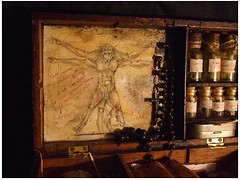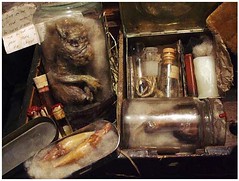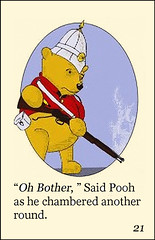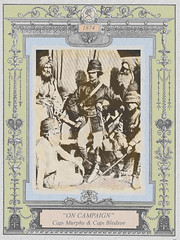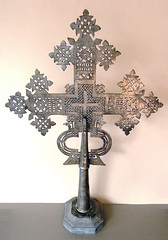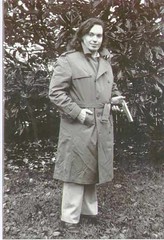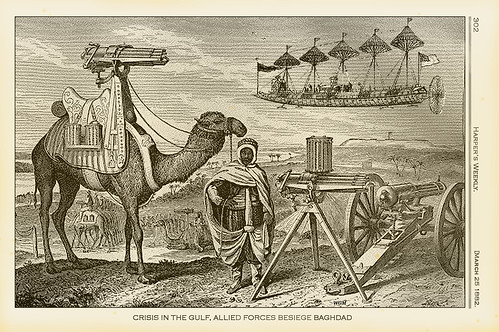 As cool as werewolves are now in popular fiction, the left side of my brain has some problems with the science of transformation although the right side of my brain just goes along with the ride. I order to keep from having a corpus callosotomy at Arkham Sanitarium; I had to investigate a bit.
As cool as werewolves are now in popular fiction, the left side of my brain has some problems with the science of transformation although the right side of my brain just goes along with the ride. I order to keep from having a corpus callosotomy at Arkham Sanitarium; I had to investigate a bit.Wikipedia has an excellent werewolf article that I highly suggest as background. Popular films and shows have evolved from the depiction of depraved monsters to those with a human side onto a highly sympathetic view. Click on the link to see a list of 20 essential werewolf movies.
OK, lets get down to the left side of the brain stuff: Where the heck does the energy come from via lycanthropy, to reshape the skeleton and produce all that fur. Fur is protein and that much fur would take a lot of calories. The second problem is where does all the body mass come from? Many stories have werewolves that are bloody huge and mass three to four times a human. Also once the werewolf returns to human shape, where does all the mass go? The fur could just fall out, I suppose and the bones return to their original shape, but where do you put an extra 300 pounds plus?
 The whole werewolf silver vulnerability gimmick is
apocryphal and is pretty much laid out in the Wikipedia article Silver Bullet. The gist of it is that the idea
was brought up in the mid 1930s in film and novels, although there is some
possible folkloric linkage. The
article also has a nice paragraph about the feasibility of silver bullets, for
those of you with a ballistic bent. The
silver vulnerability thing is also brought up in the main Wikipedia article on
Werewolves. Silver bullets and silver cane heads just don't work outside of movies.
The whole werewolf silver vulnerability gimmick is
apocryphal and is pretty much laid out in the Wikipedia article Silver Bullet. The gist of it is that the idea
was brought up in the mid 1930s in film and novels, although there is some
possible folkloric linkage. The
article also has a nice paragraph about the feasibility of silver bullets, for
those of you with a ballistic bent. The
silver vulnerability thing is also brought up in the main Wikipedia article on
Werewolves. Silver bullets and silver cane heads just don't work outside of movies. The right side of my brain just tells me to mellow out, it’s just a
story and I don’t have to act like such a fanboy about it all. The left side side tells me it makes no rational sense. Such is life.
The right side of my brain just tells me to mellow out, it’s just a
story and I don’t have to act like such a fanboy about it all. The left side side tells me it makes no rational sense. Such is life.The most surprising thing I found out with my delving into werewolves was that the silver bullet thing was a very recent invention. I guess this means I can unload my blunderbuss and cash in on all those silver dimes I had loaded up in there. Then again maybe not, see the UPDATE 22 Jun 2014: see below
An link leading to a pdf of a doctorial thesis, The Girl and the Big Bad Wolf: The Connection Between Werewolves, Killers,
Child Death, and Little Red Riding Hood in History and Story by Amanda Power,
April 2006, 44 pgs. Download here: http://www.mun.ca/vpacademic/power_paper.pdf
Werewolfpage.com has a listing of 23 folklore stories about
werewolves: http://www.werewolfpage.com/myths/folklore.html
 |
| German Werewolf |
The NAZI Werwolf organization of WWII: https://en.wikipedia.org/wiki/Werwolf
Also note there was a precursor, which was a post-WWI paramilitary Freicorps Werewolf
organization in the early 1920s.
The above pictured werewolf padlock is on Restraintsblog:
Story Padlock The Werewolf http://restraintsblog.blogspot.com/2009/06/story-padlock-werewolf.html
Also a great Victorian blog: Writers in London in the 1890s, Bram and Emily: Vampires to Werewolves. http://1890swriters.blogspot.com/2013/08/bram-and-emily-vampires-to-werewolves.html
An update on Vampire Hunting Kits -- although not about werewolves, they are associated with vampires, at least in Hollywood and in 21th century novels:
An update on Vampire Hunting Kits -- although not about werewolves, they are associated with vampires, at least in Hollywood and in 21th century novels:
Vampire Hunting Kits Debunked, June 17, 2014
UPDATE 22 Jun 2014:
in the comments section of Vampire Hunting Kits Debunked, 17 Jun 2014, Graham1973
gave an excellent link to a discussion about silver in reference to silver and lycanthrophy
in folklore. Clearly there are indeed
pre 1930 references with werewolves and silver. The upshot of the article is that silver as an evil magic
dissipator as used in these folklore stories that date back some 300
years. The main theme is that the
silver item is a common thing like a silver button or coin most often and it is
fired at or above the evil being.
Oddly, there is not a great lot of literature cited about using non-projectile silver weapons such as maces, daggers or swords against such creatures. The additional interesting link is that generally the silver object in question is a personal object and a sort of ad hoc lightening rod against evil. The other thing is that the silver projectile is not grounded, in the sense of being connecting a kind of grounding circuit, which would be the case with a wielded silver mace or other silver appliance.
Oddly, there is not a great lot of literature cited about using non-projectile silver weapons such as maces, daggers or swords against such creatures. The additional interesting link is that generally the silver object in question is a personal object and a sort of ad hoc lightening rod against evil. The other thing is that the silver projectile is not grounded, in the sense of being connecting a kind of grounding circuit, which would be the case with a wielded silver mace or other silver appliance.
The other reference is about an assassination attempt
against a non lycanthrope in the hope that the would given by a silver bullet
would not heal. In this case it would
convey a sort of curse of non-healing.
I’d like to thank
Graham1973 for this excellent listing about the general of silver in
dissipating evil. I was unaware of the
link and feel it is important enough to put into this blog in the body of the
post so it won’t be overlooked. The
original comment was in Vampire Hunting Kits Debunked.
UPDATE June 2016
Here’s an interesting excerpt from the book, A Modest
Enquiry Into the Nature of Witchcraft, by Rev John Hale, orig pub 1697, 1702
edition, Chapter XII, Pps 84-85.
“Tells of a Woman confessing her self to a witch, who
pretended she had been turned into a Wolf & filled a Sheep & Cow in
that shape, and the Cow & Sheep were killed at that time. And of a man Wolf that was suspected in that
shape, to devour Cattle, and his face had several scratches and hurts, which
they said were given him by the Dogs that took him for a Wolf …that twice a
year he was changed from a man to a Wolf. “ But Hale disputes this saying, “But his change could not be
real, but an abuse of a Phantasie, either from a distracting Melancholy called
Lycanthropia, whereby he imaged he was transformed into a Wolf.”
That’s pretty interesting that as a local minister, who
attended the Salem witch trials in 1692, would find that the wolf man story
to be a fantasy or mental illness or at best a deception. It falls in line with contemporaries Cotton and Increase
Mather on not trusting spectral evidence.
It might have to do with the fact that both of them taught at Harvard
where Hale received his degree. Anyway
I am diverting away from the lycantrophy reference here, so I’ll cut this off.
Download a copy of Rev Hale’s, A Modest Enquiry Into the
Nature of Witchcraft, 1702 edition.
Keep in mind this is a scan of the original 1702 printing, which uses
the archaic serif S character (which in that typeface the "s" looks like a lower case
f) and can lead you to some interesting misreadings if you are not
careful. A
Modest Enquiry Into the Nature of Witchcraft (Boston: Printed by B.
Green and J. Allen, 1702)
